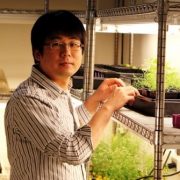
Recognizing Plant Physiology authors: Daewon Kim
Plant Physiology, Plant Physiology: Author Profiles
Daewon Kim, first author of A Temperature-Sensitive FERONIA Mutant Allele That Alters Root Hair Growth
Current position: Research Scientist in Dr. Gary Stacey Lab, Division of Plant Science, C.S Bond Life Science Center, University of Missouri-Columbia
Education: Ph.D. in 2014 at the Gyeongsang…

Recognizing Plant Cell authors: Matthias Riediger
The Plant Cell, The Plant Cell: Author Profiles
Matthias Riediger, first author of Analysis of a photosynthetic cyanobacterium rich in internal membrane systems via gradient profiling by sequencing (Grad-seq)
Current Position: Post-Doc, Laboratory of Genetics & Experimental Bioinformatics, Institute of Biology III, University of Freiburg, Germany
Education:…
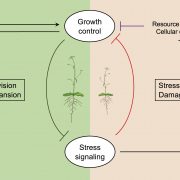
Review: Thriving under stress: How plants balance growth and stress response (Devel. Cell)
Plant Science Research Weekly
What exactly is the growth/defense tradeoff? This review is an excellent place to ask. Zhang et al. review evidence that shows that it is much more than a competition for limiting resources – the plant actively responds to stress in ways that may slow growth but ultimately promote survival. The…
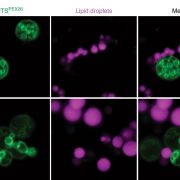
The peroxisome just updated its profile picture (Nature Comms.)
Plant Science Research Weekly
The ability to utilize stored energy is crucial for organism growth and development. For example, seed storage lipids go through hydrolysis and beta-oxidation to provide energy for seed germination. In this process, beta-oxidation occurs in the peroxisome, a subcellular compartment that houses many…
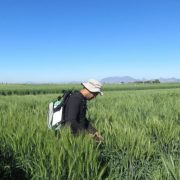
Effect of leaf temperature on the estimation of photosynthetic and other traits of wheat leaves from hyperspectral reflectance (J. Exp. Bot.)
Plant Science Research Weekly
Efficient phenotyping is important for plant breeding. For wheat, leaf reflectance spectra can be used to calculate leaf traits that impact crop yield, particularly constituent (leaf mass per area, nitrogen/chlorophyll content) and physiological (Rubisco carboxylation activity, electron transport…

Alternative splicing generates a MONOPTEROS isoform required for ovule development (Curr. Biol.)
Plant Science Research Weekly
Auxin shapes the plant body and drives the formation of lateral organs such as roots and ovules. In the current model, AUXIN RESPONSE FACTORs (ARFs) are transcription factors that regulate plant growth by activating signaling in an auxin dose-dependent manner, regulated by Aux/IAA proteins. Here,…
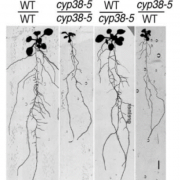
A long shot: Photosynthesis-derived systemic signal controls lateral root emergence (Plant Physiol.)
Plant Science Research WeeklyPhotosynthesis, in addition to generating ‘food’ for plants, is also known to control root growth, although the mechanism has been unknown. Duan and co-workers identified CYCLOPHILIN38 (CYP38) as necessary for photosynthesis-mediated lateral root (LR) emergence. The chloroplast-localized CYP38 is…
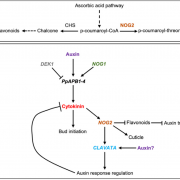
NO GAMETOPHORES 2 is a novel regulator of the 2D to 3D growth transition in the moss Physcomitrella patens (Curr. Biol.)
Plant Science Research Weekly
Three-dimensional (3D) growth was an essential evolutionary innovation that allowed the radiation and diversification of land plants. In most land plants the transition from two-dimensional (2D) to 3D growth takes place during embryo development and its disruption results in lethality, however, the…
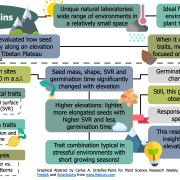
Elevation filters seed traits and germination strategies in the eastern Tibetan Plateau (Ecography)
Plant Science Research Weekly
Mountains are extraordinary natural laboratories. They encompass a wide range of environments in a relatively small space, making them ideal for assessing how different environmental variables shape plant traits and communities. Here, Wang and colleagues evaluate how seed functional traits vary along…

